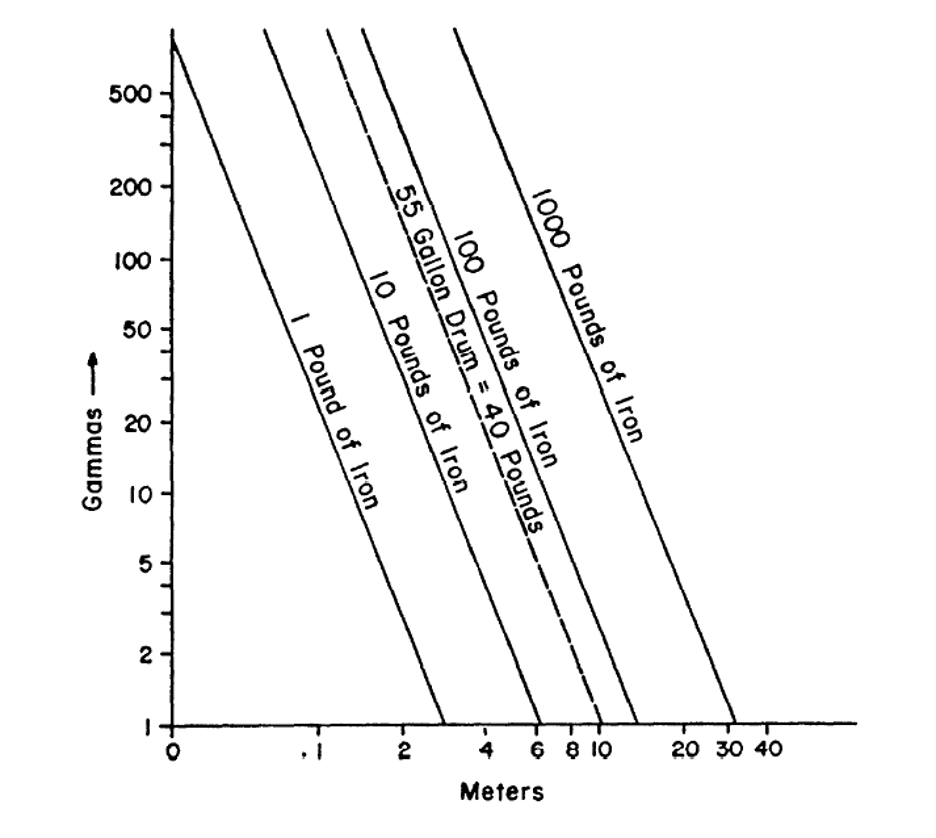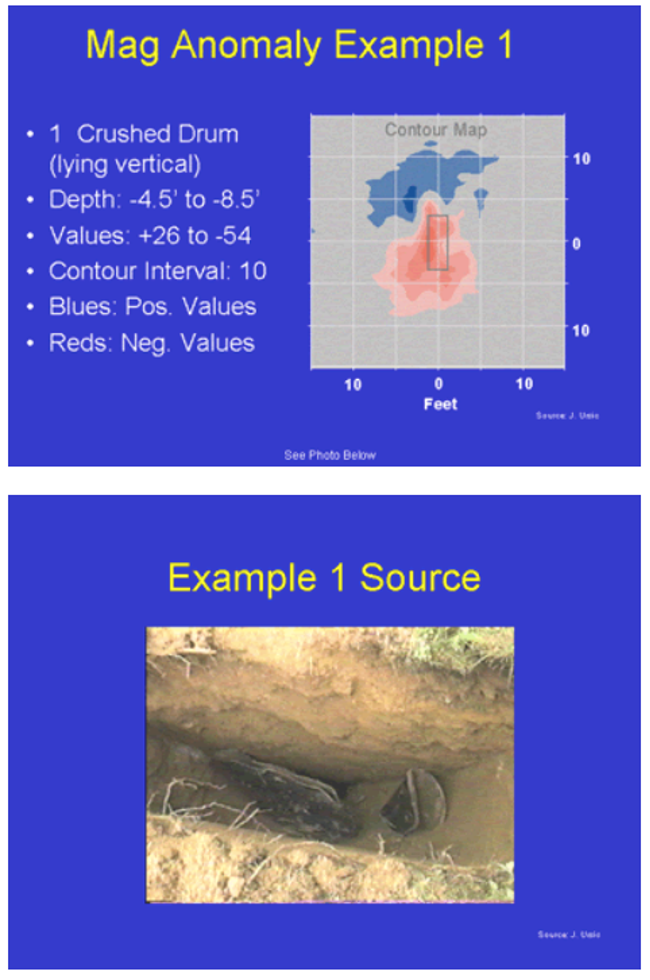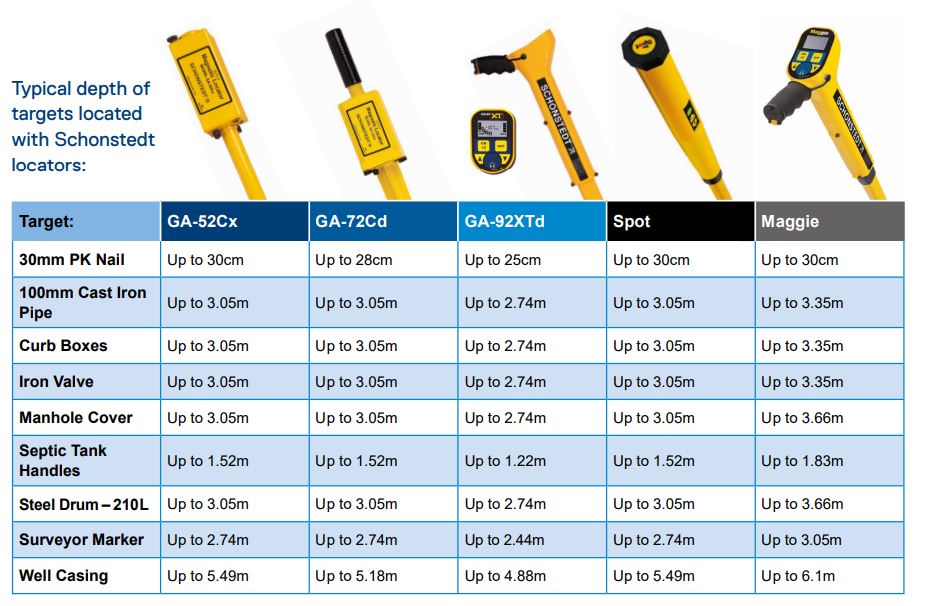 Limitations of Magnetic Fields
Limitations of Magnetic Fields
What are the Limitations of Magnetic Fields?
Here is a list of explanations of the limitations of magnetic locating.
The main disadvantage is that in most cases the research shows that magnetic locating in buildings doesn't give reliable, consistent results for most situations.

Martensitic stainless steels (which have a ferritic microstructure) are magnetic. Austenitic stainless steels contain nickel and are non-magnetic.



Figure 13. Estimated magnetometer response in gammas to objects of different mass at various depths (Benson, et al., 1984).

Figure 11. An example of a contour plot of a crushed buried drum (J. Ursic, EPA Region 5).
Typical locate depths are usually upto about 3 meters deep, and for larger masses like well casings can be detected upto about 6 meters.


